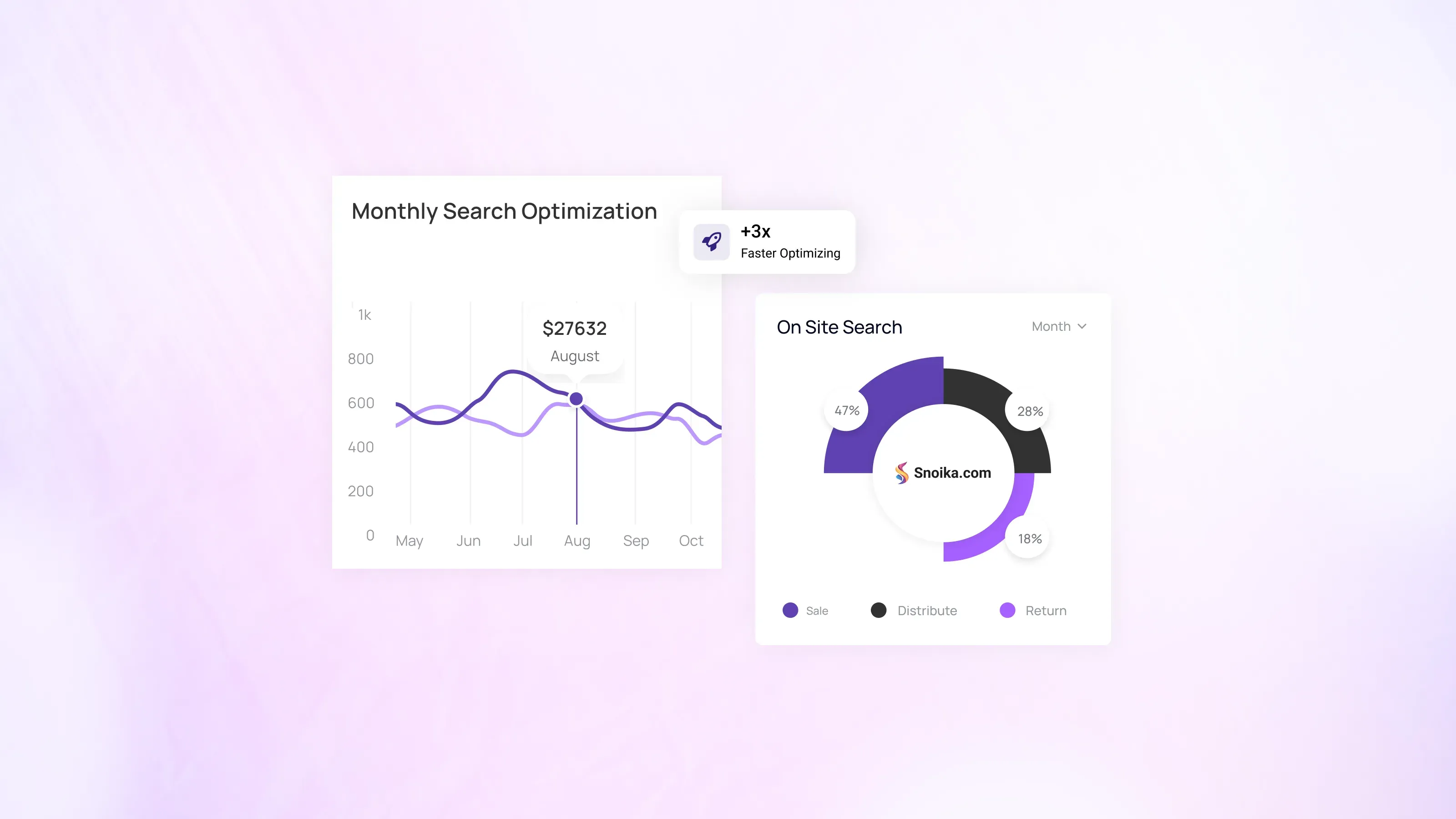SEO vs Website Search Optimization
When people mention “search optimization,” they often think only of SEO. But true growth requires optimizing both how users find your site (via search engines) and how they interact with it once they arrive (through on-site search). While SEO drives discovery on platforms like Google and Bing, internal search impacts engagement, retention, and conversions. According to Nielsen Norman Group, users who can’t find what they need quickly on your site are likely to leave - making both types of optimization essential for modern digital strategy.
What Is SEO (Search Engine Optimization)?

SEO (Search Engine Optimization) focuses on getting your website discovered on external platforms like Google, Bing, ChatGPT, and Perplexity.
Key areas of SEO include:
- Technical SEO: Site speed, mobile-friendliness, structured data (Google Search Central)
- On-page SEO: Keyword optimization, meta descriptions, internal linking (HubSpot SEO Guide)
- Off-page SEO: Backlink building, social signals, and brand mentions (Moz Link Building Guide)
Snoika’s AI SEO platform helps startups publish, optimize, and rank faster - without hiring expensive SEO agencies.
What Is Website Search Optimization (On-Site Search)?
Website search optimization, also called on-site search optimization, focuses on helping users find content after they’ve arrived on your site.
Main elements include:
- Improving internal search result relevance.
- AI-powered result ranking and filtering.
- Reducing zero-result searches.
According to Nielsen Norman Group, users who can’t find what they want quickly on your site often leave - hurting engagement and conversion.
Want to optimize both your website and internal search? Explore Snoika’s Website Builder and SEO solutions.
SEO vs. Website Search Optimization: Key Differences
-
Goal: SEO brings external traffic, on-site search improves engagement.
-
Tools: SEO → keywords, backlinks, structured data. On-site → relevance ranking, AI filters.
-
Metrics: SEO → rankings, impressions. On-site → conversions, bounce rate, time on site.
Why Both Matter: Startup Case + Market Research
One Snoika client - a fast-scaling SaaS startup-focused heavily on SEO for startups, ranking for top keywords. Yet, demo sign-ups stayed low.
After implementing on-site search optimization, they saw:
- Bounce rates decrease by 28%.
- Average time-on-site increase by 35%.
- Demo conversion rate jump by 40%.
This aligns with Search Engine Journal, which reports that SEO without user-focused UX results in wasted traffic.
Looking at industry trends, Gartner predicts that by 2026, 65% of enterprises will adopt AI-powered search tools.
Why SEO and On-Site Search Matter for Startup Growth
Here’s why investing in both makes sense:
- SEO drives qualified traffic from Google, Bing, ChatGPT, and Perplexity
- On-site search turns traffic into conversions by improving user experience
- AI visibility improves, getting your brand cited in AI-generated answers
- Lower bounce rates and better engagement metrics
- Higher revenue potential, especially for SaaS and eCommerce
According to Baymard Institute, on-site search users are up to 3x more likely to convert.
Learn how Snoika supports B2B marketers and SaaS growth teams.
Common Mistakes When Balancing SEO and On-Site Search
Many founders invest heavily in SEO but forget that on-site search plays an equally important role in turning visitors into customers. When the two are not aligned, even strong Google rankings can lead to poor engagement and low conversions.
To avoid this, it’s important to recognize the most frequent pitfalls teams fall into:
-
Relying only on external traffic from Google and Bing
-
Ignoring valuable internal search analytics
-
Overloading pages with keywords at the cost of navigation
-
Failing to use AI tools that unify SEO and on-site search
The Most Frequent Pitfalls
Relying only on Google traffic without improving on-site experience is the most common mistake. Visitors may discover your site, but poor navigation or irrelevant search results quickly drive them away. Ignoring search analytics means missing insights about what users want, while keyword stuffing creates frustration instead of conversions. Without AI-powered tools like Snoika to connect both strategies, startups risk wasting resources and losing growth opportunities.
How to Get Started: Your 3-Step Action Plan
-
Run an SEO Audit: Use Snoika or platforms like Google Search Console to identify technical SEO issues, keyword gaps, and backlink opportunities.
-
Analyze On-Site Search Behavior: Review internal search queries, click-through rates, and zero-result searches. As Baymard Institute reports, improving on-site search directly impacts conversion.
-
Implement AI Optimization for Both: With Snoika, startups can publish SEO-optimized content and fine-tune internal search experience in one workflow.
Want industry-specific insights? Explore our solutions for content-driven media brands and eCommerce marketers.
Conclusion
The difference between SEO and website search optimization goes beyond tactics - it’s a growth strategy. SEO brings people to your site, but it’s on-site search that converts them into leads, demos, or customers. With Snoika’s AI-powered platform, fast-growing startups and B2B teams can optimize both - without doubling the effort. Explore Snoika’s full suite of SEO optimization and on-site search tools.







